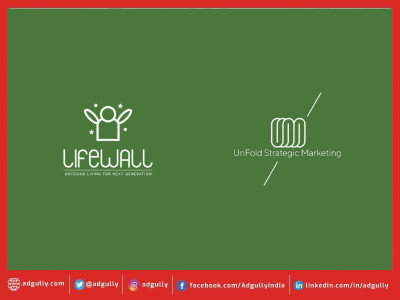Metaverse will dominate the digital space in 2023 & many years to come: Moneka Khurana
India is a land of immense opportunities for brands to leverage festivals and make a stronger impact on their audience. Festivals give rise to many emotions which lead people to splurging on new things and new experiences. But during festival season, the customer is also spoilt for choice with so many brands promoting their products. Mobile marketing has evolved over the last few years and falls under the broad spectrum of modern marketing. Brands are leveraging mobile mediums for festive season campaigns in the form of Search, Display and Sponsored advertising. India is a huge market with about 40% ad spends on digital platforms this festive season. Tech giants like Amazon are providing such formats to brands across sectors to amplify their marketing game.
For instance, Amazon Ads helped Ferrero Rocher, the chocolate gifting brand, to effectively target and leverage the accelerated demand for chocolate gifting during the festive season. They were able to achieve this through a two-pronged approach; Display ads and Search ads. This helped drive awareness among in-market audiences and build native visibility within search results on amazon.in.
In conversation with Adgully, Moneka Khurana, Country Head and Board Member of MMA India speaks at length about the trends that will dominate this year in the digital space, first party data adoption in the APAC markets, and much more.
What are the trends that you see dominating the digital Space in 2023?
Metaverse is undoubtedly one trend that will dominate the digital space in 2023 and many years to come. Understanding virtual worlds, digital goods, and the broader Metaverse is mandatory for any marketer seeking to engage Gen Z, and it presents many opportunities. Early movers to this medium have shown that their preparedness, innovation, and creativity have introduced new ways of thinking about the consumer, positioning their brands as creators of a new narrative.
The Mobile App Trends trends also saw a drastic change during 2020 as people all around the world turned towards mobile for entertainment, daily tasks and necessity during Covid-19 induced lockdowns in the country. Within the APAC region, it wasn’t just the number of sessions and installs that increased drastically – the time users spent in-app, the number of sessions they had per day, and the length of the average session also grew. More people in APAC are turning towards mobile and digital solutions for entertainment and daily tasks than ever before.
Asia’s Gen Z consumers and their millennial counterparts have taken to digital consumption in a manner unrivaled by their global peers, consuming content, purchasing products, socialising with friends, and playing games. There are three billion people today who identify as gamers and over 55% of them live in Asia.
While brands will generally continue to recognise the importance of a presence on social media, in 2023 we’ll see them finally embrace a more human approach to the channel. This will manifest in two different strategies and the smartest brands will incorporate both, deploying a seamless combination of UGC (user-generated content) or IGC (influencer generated content).
While technologies such as AI, AR and data-driven marketing continue to grow with an emphasis on Web 3.0, the overarching focus will be on people, not technology.
The marketing trends that will dominate in the few months will include Customer Experience, Employee Engagement, and Content Visualization.
I would like to talk about the below-mentioned emerging trends in marketing right now:
- More Long-Term Influencer-Brand Relationships
- Conversational Commerce
- Experiential E-Commerce
- ‘Doing Digital Right’
- The rise of influencer marketing
- Bigger business pivots to online/ digital
- The growth of interactive content
- New VR-based software tools and apps
- Voice marketing
- Metaverse or Web 3.0
If I talk about influencer-led commerce, nearly a third of the total e-commerce business in a few Southeast Asian markets is now social commerce. In India, we are also witnessing a positive response with creator’s reach being 2X over brand reach, and creator conversion rate nearly 3X that of brands.
What are the projections for digital spends in the coming year/s?
According to MMA EY ‘Leveraging Complex Consumer Data for Marketing 2022’ report, digital advertising share will reach up to 50% by 2024, with Indian advertising expected to reach Rs 1 trillion.
How do you see first party data adoption in the APAC market?
Adopting a durable, consented first-party data strategy is crucial to creating compelling, personalised user journeys without using cookies. More media owners are investing in the capture and analysis of audience data as they look to grow their own first-party data capabilities. This year, a higher proportion of media owners are focused on investing in data capture (66%) and analysis (58%) of their own audiences. This shift comes at a time when advertisers and publishers are prioritising building first-party datasets as they prepare for a cookieless future.
According to the MMA EY ‘Leveraging Consumer Data for Marketing’ report 2022, a majority of Indian organisations continued to use a blend of 1P and 3P data for marketing. They accepted the fact that gaps in data quality need to be addressed for optimal decision-making.
MMA jointly with EY, surveyed over 170 CEOs and CMOs across various sectors to understand the trends amongst the CXO community on consumer data strategy and critical success factors in the second edition of the report. It shows that the marketers are evolving contextual and publishing targeting, and 1p data collection to gear up for the cookie-less world.
60% of marketers had little or no integration of their 1P and third party (3P) data with limited employee access in 2021 vis-à-vis 55% in 2022.
Could you share some current Indian trends?
Personalised advertising is at the heart of the digital advertising ecosystem, which drives the digital economy and is consequential to the overall economic growth. Language-first approach is a trend which is driving growth and stickiness in the space clubbed with voice, which is enabling new user growth, eliminating barriers of literacy and language in a diverse country like India.
Some (mobile) marketing trends that the industry needs to look out for in the near future?
The role of mobile in the arsenal of marketers has grown significantly. Data analytics, marketing automation and location data are amongst the top 3 technologies being embraced by marketers and AR/VR and AI/ML are emerging as growing trends to deliver immersive and phygital personalised experiences to customers as per the MMA WARC State of Industry 2022 report. The speed of innovation within digital marketing continues to drive mobile marketing forward. These innovations are linking offline and online together like never before, and marketers are making significant investments in mobile marketing technologies to ensure they keep up with their competition.
The top mobile marketing trends to look out for in near future are:
- Metaverse will dominate the digital space in many years to come
- 3Vs (Vernacular, voice and video) will bring the next set of shoppers online
- Hyper Personalisation - Brands should customize experiences for every cohort. e-commerce understands customer journeys deeply, enabling brands to create differentiated experiences.
- One stop shops - Top e-commerce companies have started to develop ecosystems that combine their core e-commerce business with sticky customer services such as video streaming, gaming, booking and payments in a single platform or application.

















Share
Facebook
YouTube
Tweet
Twitter
LinkedIn